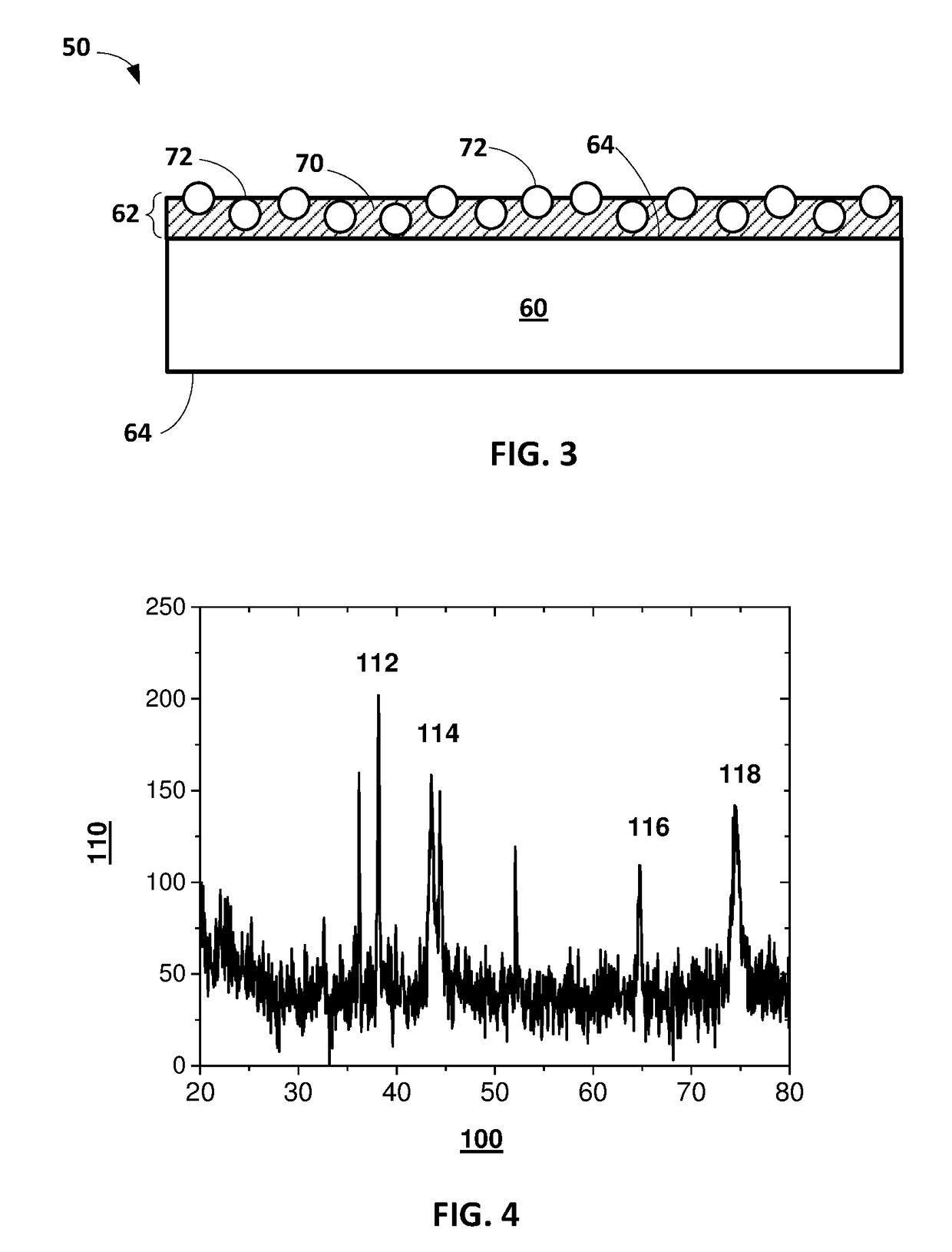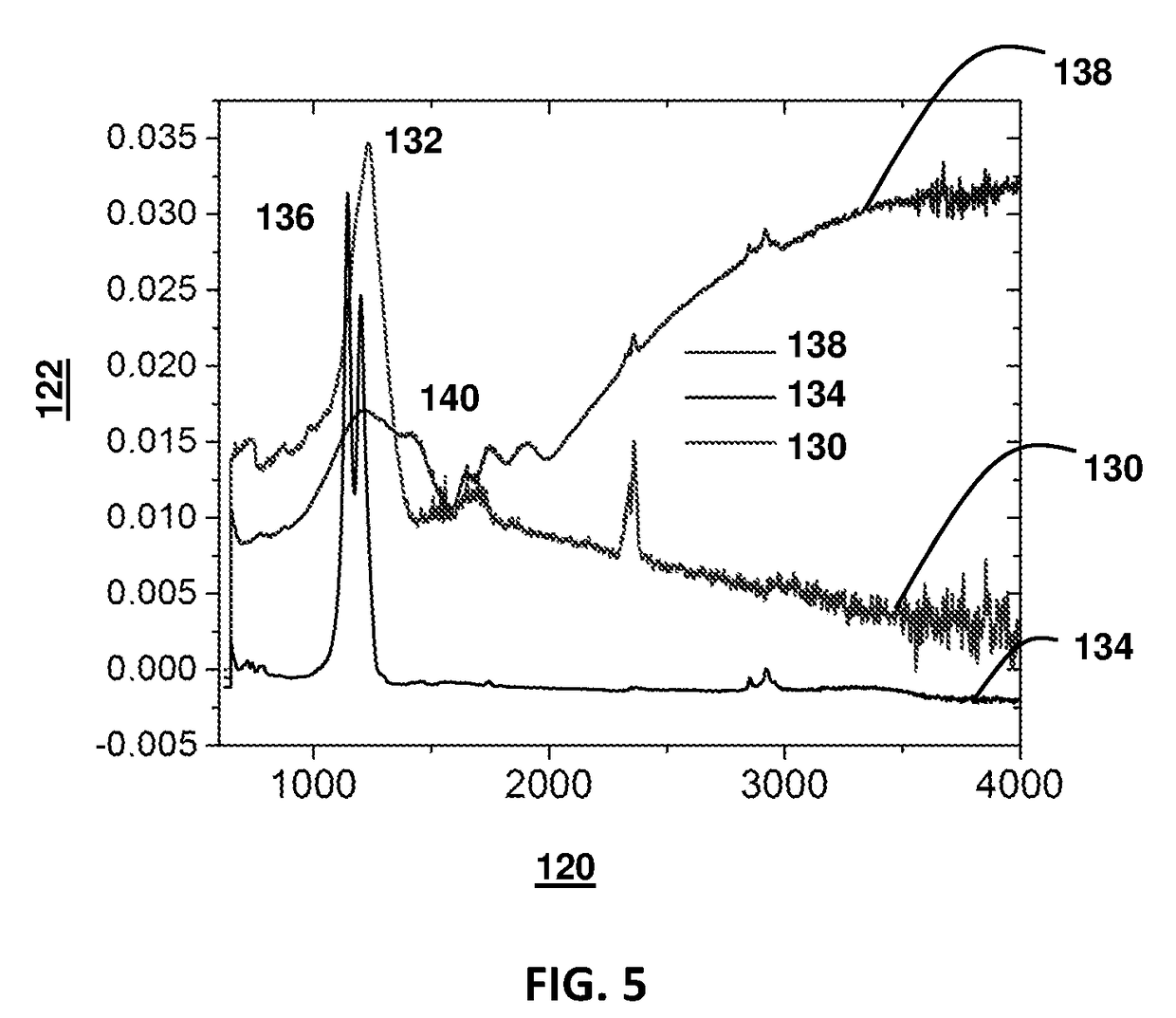Methods of applying self-forming artificial solid electrolyte interface (SEI) layer to stabilize cycle stability of electrodes in lithium batteries
- Summary
- Abstract
- Description
- Claims
- Application Information
AI Technical Summary
Benefits of technology
Problems solved by technology
Method used
Image
Examples
example 1
[0088]A radio frequency magnetron sputtering system is used to deposit polytetrafluoroethylene (PTFE) coating at room temperature (about 21° C.). A 3 inch diameter PTFE disk is used as a sputtering target. When the target is bombarded with Ar ions, the sputtered PTFE is then deposited on a lithium metal disk / substrate. The RF power is 170 W, with 2 sccm Ar flow. The coating thickness is around 1 micron.
example 2
[0089]An electrochemical test is conducted as follows. A symmetric cell with PTFE coated Li disk (13 mm in diameter) as a negative electrode is assembled in Ar filled glovebox. The electrolyte in the cell includes 1M LiPF6 in EC:DEC. The cell is cycled with current density of 1 mA / cm2 and a capacity of 4 mAh / cm2. The cut-off voltage is ±0.5 voltage. The control cell is uncoated Li disks with the same size.
[0090]FIG. 6 shows cycle performance in a plot of voltage (V) on an y-axis 142 over time (hours) on an x-axis 140 for a symmetric cell with the PTFE coated Li disk 150 prepared in accordance with certain aspects of the present disclosure and the control 152 incorporating an uncoated Li disk. As can be seen, the control cell 152 fails around 125 hours, while the PTFE coated Li disk 150 continues successfully cycling past 450 hours. Thus, the presence of the composite surface layer on the lithium disk improves the cycle stability when it serves as a lithium metal electrode in a symme...
example 3
[0091]A half cell with PTFE coated Si thin film (100 nm thick and 12 mm in diameter) on a Cu substrate is assembled in Ar filled glovebox, with a 15 mm Li disk as the counter electrode. In this example, the silicon is not prelithiated, as it is incorporated into a half cell where the counter Li electrode provides sufficient Li to the system. The electrolyte in the cell includes 1M LiPF6 in EC:DEC. The cell is cycled with current density of 10 micron A / cm2 and the cut-off voltage is 1V and 0.05V. The control cell is uncoated Si film electrode with the same size.
[0092]FIG. 7 shows comparative cycle performance in both a plot of charge capacity (Ah) on an y-axis 162 versus an x-axis 160 of cycle index for a symmetric cell with the PTFE coated silicon thin film 170 prepared in accordance with certain aspects of the present disclosure and a control 172 incorporating an uncoated silicon film copper disk. FIG. 7 also shows Coulombic Efficiency (CE) on the opposite y-axis 164 versus cycle i...
PUM
 Login to View More
Login to View More Abstract
Description
Claims
Application Information
 Login to View More
Login to View More - R&D
- Intellectual Property
- Life Sciences
- Materials
- Tech Scout
- Unparalleled Data Quality
- Higher Quality Content
- 60% Fewer Hallucinations
Browse by: Latest US Patents, China's latest patents, Technical Efficacy Thesaurus, Application Domain, Technology Topic, Popular Technical Reports.
© 2025 PatSnap. All rights reserved.Legal|Privacy policy|Modern Slavery Act Transparency Statement|Sitemap|About US| Contact US: help@patsnap.com



